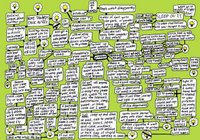 Of all the things I've discovered on making a living from my online work, knowing that my visitors will only stop if I have something they want, has to be the biggest money maker - by far. Yes, ad placement and colors have their place, but content of value is the most important asset you can have.
Of all the things I've discovered on making a living from my online work, knowing that my visitors will only stop if I have something they want, has to be the biggest money maker - by far. Yes, ad placement and colors have their place, but content of value is the most important asset you can have.Like you, I've Google'd and found many sites that offer content. Then, researching a little more, I've found many people already using the same text. Duplication of copy offers little to the visitor searching for new and valuable content. So, scratch that. And, if you're like me, you want to find a way to provide content without breaking the bank.
So, what do you do?
You write your own. Now, this takes some time, but I can simplify the homework by providing a step-by-step formula for writing your own copy. First, it is important that you know your audience.
That's sounds so easy, no? Know your audience. Okay - how? Much depends on your target audience - and what content you are aiming to provide. For instance, we know why many daytime television "soap operas" were named such because the primary audience is stay-at-home females between the ages of 25 and 36. These people were prime for agencies selling soap. Females are largely the ones who do the laundry or wash dishes. Advertisers knew their audience.
What's different here? Nothing.
Key in on who is visiting you - where they're finding you and how. Who are you writing for and who are you advertising for. Then ask yourself these questions:
- In the mind of the visitor, what is the problem facing them? Your whole site should be a resolution to that problem. You should strive to know their pain, problem and predicament.
- What is possible? This is what you expect the scenario will be to solve the visitor's problems.
- Why hasn't the solution been found? Maybe they're stuck - why?
- What is different now? Here, find what has changed in the visitor's life that would cause them to look to you for a solution.
- What should your visitor do? Tell the visitor what they need to do to come up with a solution.
Start by asking each question and writing down a few sentences on each. Often that's enough copy to create your page. However, you will find that it mainly provides a skeleton. The next step is to simply add more meat to the story. Add detail. Some copywriters create a page or pages for each step, with links to the next step. This provides a path through the site where the visitor will be presented with more pages, thus more ad impressions for you.
So, don't believe you can't do it yourself. You have the potential to write greatness. Don't rely on someone's work that may become extremely overused very quickly. Rise to the challenge; get out the notepad or keyboard and create your masterpiece.